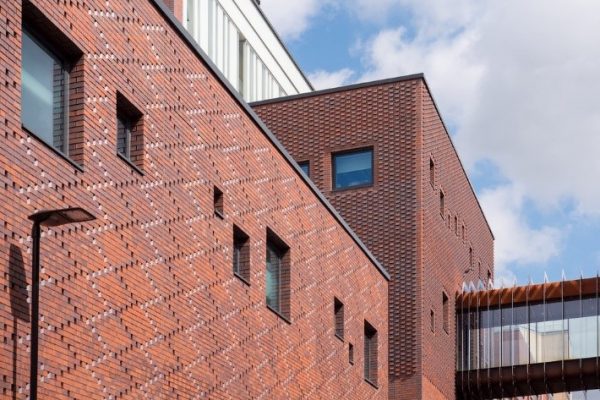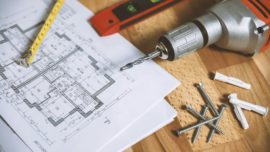
When the decision is made to get a house extension, one of the most popular questions that often comes up, as a result, is the battle between a flat roof vs pitched roof, and which is going to be the better choice to add for you. Each has their own unique benefits and their disadvantages to along with them, but as far as roofing options go, it is quite difficult to get it wrong with either.
Here, we’re running through the pros and cons of each type of roof structure so that you can decide for yourself which type is going to be the best fit for you. It comes down to a battle of practicality, aesthetics, and general preference really, but here’s what each has to offer.
Flat Roofs
Flat roofs are one of the most popular choices of roofing, so we’ll start with these to get the ball rolling.
Advantages
The reason most people will opt for a flat roof is the low cost, along with the timescale. They are significantly cheaper than their pointy counterpart, although they do have much less curb appeal. The options for the flat roof are becoming better than ever before, however, so keep that in mind for down the line too. There may be some changes you can make later on should you wish to.
Another huge benefit that is exclusive to the flat top roof style vs the pitched roof is that the flat roof provides you practical use options, too. People are getting more and more comfortable with the idea of boosting outdoor space by making a first-floor patio and potted garden on the roof. This does need the strength taken into account of course, but still could be a social hot spot for your family and friends.
From a construction point of view, the good old flat roof is a logistical heaven. They’re easy to install, easy to maintain and easy to fix too. That’s a money saver. Even if you need to clean the gutter, you can just pop on to the flat roof and not worry about sliding off down the back.
Disadvantages
The main argument against flat roofs typically comes from their appearance. Flat roofs generally are just not as aesthetically pleasing as their opposites, and there’s very little that can be done about that aside from using them as a rooftop garden space, the strength provided.
When choosing a flat roof, you do need to consider that you will more than likely need to repair it more often than its pitched counterpart. Flat roofs are not designed to withstand extreme weather conditions or weather changes, and that’s a big downside.
Drainage may also be a problem for flat roofs, so when you engage your roofer/builder who will be adding yours, ensure that they take this into consideration and put in something that will assist with the drainage. That’s essential to minimise damage to the materials. If you do ever need to replace your flat roof in the future, the process is relatively painless and can be quickly done by either a roofing company or a competent builder.
Pitched Roofs
Pitched roofs are the much more common roof choice seen on extensions and on homes in general, both for practical and for aesthetic reasons, but that still doesn’t make them ideal in some cases…
Advantages:
Pitched roofs inevitably have a longer lifespan than their flat counterpart, as the materials used can vary significantly from slated, to tiled and even thatched. Natural slate has an average lifespan of over 100 years, although it may be slightly more expensive than its tiling cousins. The benefits of less maintenance and longevity may out weight the cost difference, so this is just one area that may sway your vote.
Another huge selling point of pitched roofs vs flat is that a pitched roof can also be used for extra space for storage or even to accommodate an additional room later on if you so wish, effectively as a double storey extension.
Disadvantages
While a pitched roof has numerous advantages, they do also have a few disadvantages, too. They are more costly upfront and take longer to install than the flat roof counterpart, and that alone is a huge problem for a lot of project and budgets.
The weight will also place a greater strain on the structure of your building and on the foundations, meaning this will need to be taken into consideration when thinking about your building. It could mean that your overall build will need to be much sturdier, and if that is the case, this needs to be factored into your project as a whole and the cost behind it too. It’s financial in other areas.
Summary
Overall, the answer to the flat vs pitched roof argument really just comes down to you and your own opinion. It depends entirely on whether you’d rather have something of a lower budget and in need of more maintenance, or something highest in price but that also increases your build costs quite substantially.
Whatever you decide to do, speak to your architectural designer before you make your final choice, as they will always have the best advice to give you for your specific and unique situation.



